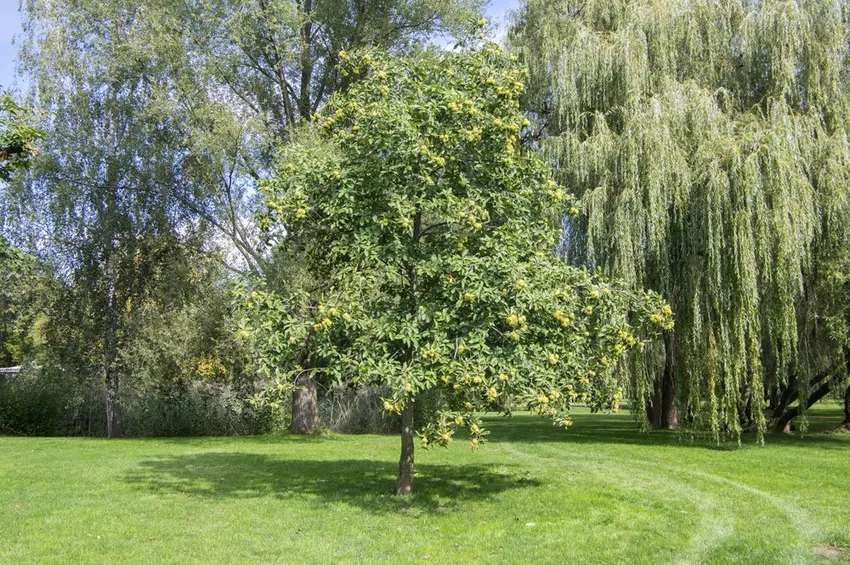If you want to grow a chestnut in your own garden, you really need a lot of patience. Because it takes at least 15 years until the first harvest.

Sweet chestnuts (bot. Castanea sativa) are tasty and versatile. However, sweet chestnuts have little in common with the widespread horse chestnut and are classified as nuts. If you want to roast your own chestnuts in the future or implement some of the many preparation recommendations, you will need to be patient. Chestnuts are quite easy to grow yourself before the first fruits can be harvested, but it takes at least 15 years.
In the following you will learn how chestnuts can be grown yourself and what needs to be considered when caring for young trees.
What should be considered when planting chestnuts?
Suitable location for the sweet chestnut
If you want to grow chestnuts yourself, you should first make sure that there is a suitable location in the garden. The trees prefer a sheltered spot. Both sun and partial shade are tolerated.
Ideal substrate for sweet chestnuts
The soil quality is particularly important. The plants need a substrate with a high content of potassium and phosphorus.
Tip: In wine-growing areas, the substrate is ideal for cultivating sweet chestnuts.
In the home garden, the soil can be mixed with compost before planting. This gives the chestnuts a nutritious long-term fertilizer.
Special features when planting chestnuts
The roots of the trees need enough space. Sweet chestnuts form a long taproot. The soil should be loosened up accordingly. A generous planting hole is also important. The diameter of the planting hole must be at least twice the size of the planter.
How can chestnuts be propagated?
The chestnut can be propagated using the following methods:
- Sowing
- Cuttings
Sowing the chestnuts

First the good news: Sweet chestnuts are quite easy to grow from seeds. However, varietal purity is not given for self-collected seeds. It can't be saidwhich chestnut species was responsible for the fertilization and which characteristics were inherited. It should be around 20 years before the first chestnut harvest.
Sowing step by step
1. use fresh seeds immediately, soak dry seeds for several days
2. use nutrient-poor substrate
3. sow seeds
4. cover seeds about an inch with soil
5. Lightly water the seeds
6. Keep the planter evenly moist
Since the seeds need to be sufficiently moist, dry seeds should be watered for a day or two. The seeds should only be kept slightly moist. If the seeds get too much moisture, it will make germination difficult.
Chestnut propagation by cuttings
Late winter is the right time for propagating cuttings. Then the sticks are cut. These are some he althy and strong shoots of the sweet chestnut tree.
Tip: Each shoot should have at least three eyes (bulges).
The shoots are cut diagonally from the branches. The sloping interface is inserted into a peat-sand mixture. Just cut off the top shoot tip. Again, too much moisture should be avoided. If the cuttings are only kept slightly moist, new roots will form quite quickly. These sprout from the so-called eyes - the buds - which are underground.
The cuttings overwinter in a bright and frost-free location. After successful propagation, the cuttings will form the first leaves in spring. The frost-sensitive plants are left indoors for the first winter and can be cultivated outdoors in a sheltered spot next spring.
How to proceed with the young plants?
The seedlings are repotted after about ten months. The root ball is carefully removed from the old planter and placed in a newer and larger planter.
Tip: Use a slightly acidic substrate because the chestnuts do not tolerate lime well.
In the first few years, the young plant stays in the planter and spends the summer in a sheltered spot outdoors. Mature chestnuts are generally hardy. Young plants must be protected from frost and moved indoors.
Tip: If the chestnuts were planted outdoors, they must not be dug up again.